-
-
Yoga Courses
Yoga Teacher Training India
Yoga Teacher Training Canada
Yoga Teacher Training Germany
Yoga Teacher Training Greece
Yoga Teacher Training Portugal
-
Yoga Retreats
-
YTTC Guide
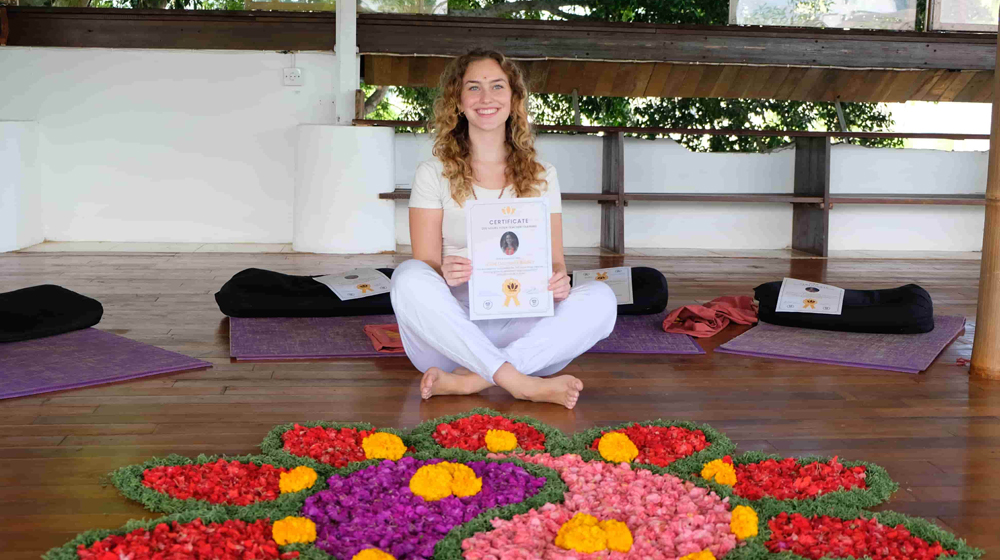
Why Arm Balancing?
While arm balances look impressive, they offer much more than just Instagram-worthy poses. These postures challenge both body and mind on multiple levels.

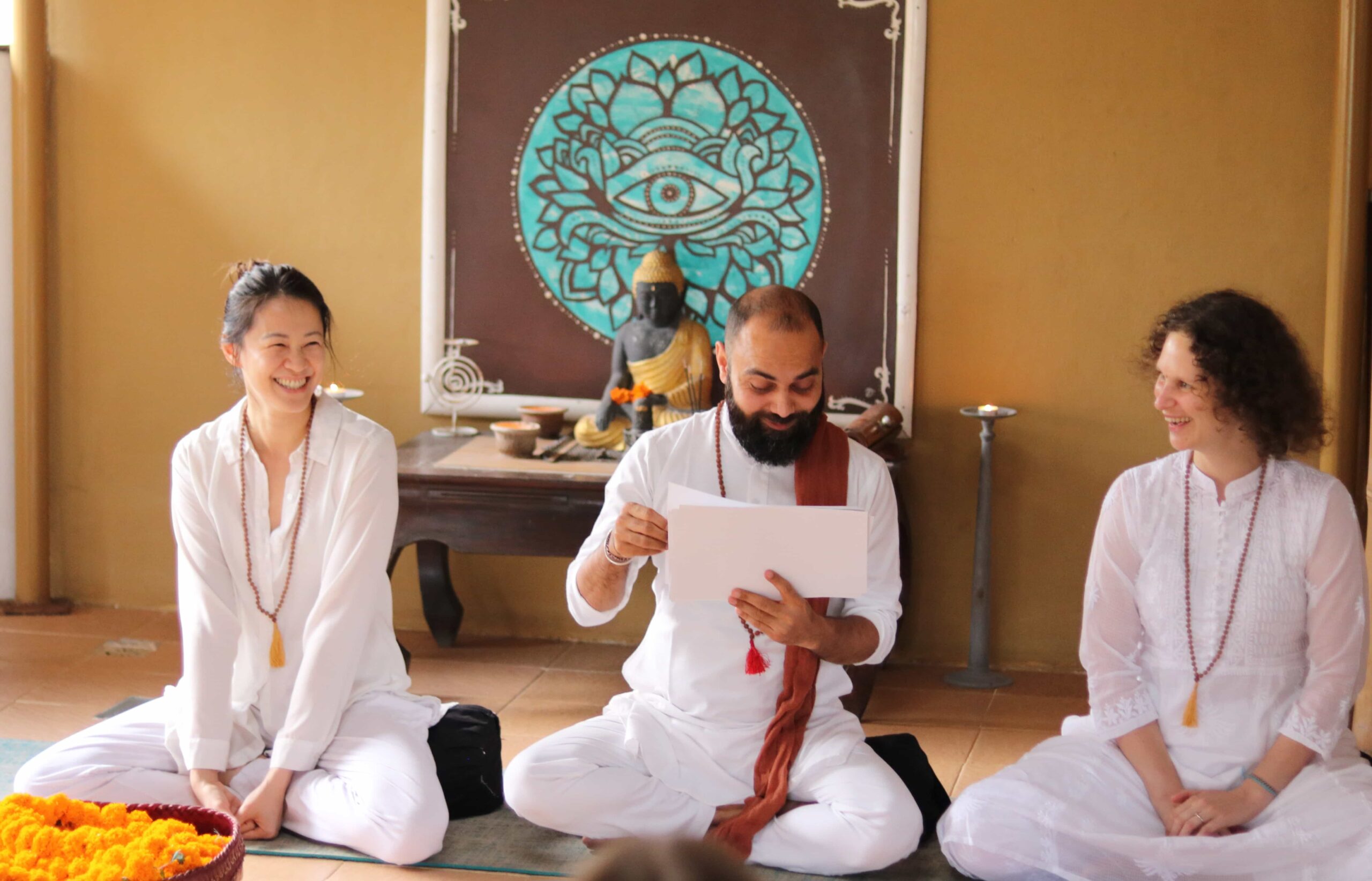



Developing Full Body Strength
In this Arm balancing course you will learn to control your physical body, making it stronger and more flexible. This physical control also contributes to a calmer and more flexible mind.
Building Courage and Confidence
Balancing your body weight on your hands takes courage. Regular practice builds confidence and deepens your connection with your body’s innate wisdom.
Enhancing Focus and Concentration
Successfully moving into and holding an arm balance asana demands focus and concentration. A distracted mind will hinder your ability to balance. As with all Yoga practice, presence is essential.
Join Our Arm Balancing Training
Our 50 hour arm balancing training is designed for intermediate to advanced Yoga practitioners seeking a new challenge for both body and mind.
We offer a place where you can find happiness through movement, pranayama, meditation and well-balanced nutrition. We are here to guide you on your spiritual journey, to connect with your Inner-Self and to find contentment and peace in life.
Balancing on your hands can be inspiring and intimidating at the same time. This is why we will go step by step preparing your body for the more advanced postures. After attending our 50 hours arm balancing training in Bali we want you to feel confident to practice and teach arm balancing asanas in your Yoga classes.
In our theory sessions we will revise Patanjali’s Ashtanga Yoga – the eight limbs of Yoga again, as they build the foundation of living a yogic life. Even though asana practice is important to keep our bodies strong and flexible, ultimately, it is intended to prepare our bodies to sit comfortably for long hours during mediation.
Sanskrit is the language of Yoga and all posture names have their origin in the world’s oldest language. In this Teacher training you will learn the Sanskrit breakdown of the arm balance asana names.
You will learn how to engage the bandhas to lift up and retain the prana inside your body to get stability of body and mind when practicing the arm balancing postures. Mudras help to control the prana, increase the flexibility and strength of our hands and balance the five elements. And in the end arm balancing is all about balancing body and mind.
How to Teach Arm Balancing Asanas: The foundational techniques for teaching arm balancing poses, including the key principles of alignment, balance and strength.
How to Use Bone-on-Bone Alignment: The concept of bone-on-bone alignment and its importance in arm balancing, learning how to stack the bones in a way that maximizes support and minimizes muscle strain.
How to Include Arm Balancing Postures into Your Classes: Strategies for incorporating arm balancing postures into yoga classes, learning how to introduce these poses progressively and tips on integrating arm balances into different class themes and styles.
How to Sequence Arm Balance Poses in a Safe and Efficient Way: Techniques for sequencing arm balancing postures safely and efficiently, involving understanding of the preparatory poses, counterposes and transitions.
How to Verbally and Physically Align Your Students: Effective methods for aligning students verbally and physically during arm balancing classes, learning precise cueing techniques to guide students into correct alignment and adjustments to help them find stability and balance.
How to Build Up the Needed Arm Strength: Exercises and techniques to develop the arm strength necessary for arm balancing and learning how to incorporate these exercises into the regular practice.
Focus areas
How to warm up the body: The importance of a thorough warm-up to prepare for arm balances.
How to Perform the Sequence: Step-by-step instructions on executing an arm balancing sequence, including transitions between poses.
How to Develop the Arm Balancing Flow: Techniques to create a seamless arm balancing flow, including linking poses together smoothly, maintaining continuous breath, and developing a rhythm.
How to Protect Your Joints: Strategies to safeguard joints during practice and awareness of proper alignment to prevent injury, especially in the wrists, elbows and shoulders.
How to Use Props to Support You: The effective use of props such as blocks, straps, and bolsters to achieve safe alignment, support weaker areas, and gradually build strength and flexibility.
How to Move Toward Relaxation: Techniques to transition from intense practice to relaxation, including cooling down the body with gentle stretches, using restorative poses to release tension, and practicing mindfulness to calm the mind.
Arm Balancing Yoga Poses included in this training:
The time schedule is not fixed and can change according to location, teacher availability, weather conditions and general situation.
Shatkarma | 06:30 to 06:45 am |
Pranayama/Meditation | 06:45 to 07:45 am |
Yoga asana practice | 07:45 to 09:15 am |
Breakfast | 09:15 to 10:15 am |
Yoga theory/Anatomy & physiology | 10:15 to 11:45 am |
Asana Alignment | 11:45 to 01:30 pm |
Lunch | 01:30 to 03:15 pm |
Break | 03:15 to 04:45 pm |
Arm Balancing practice | 05:00 to 06:30 pm |
Mantra Chanting | 06:30 to 07:00 pm |

Being a Yoga teacher is more than showing poses. It’s about guiding others with compassion on their journey to a better life.
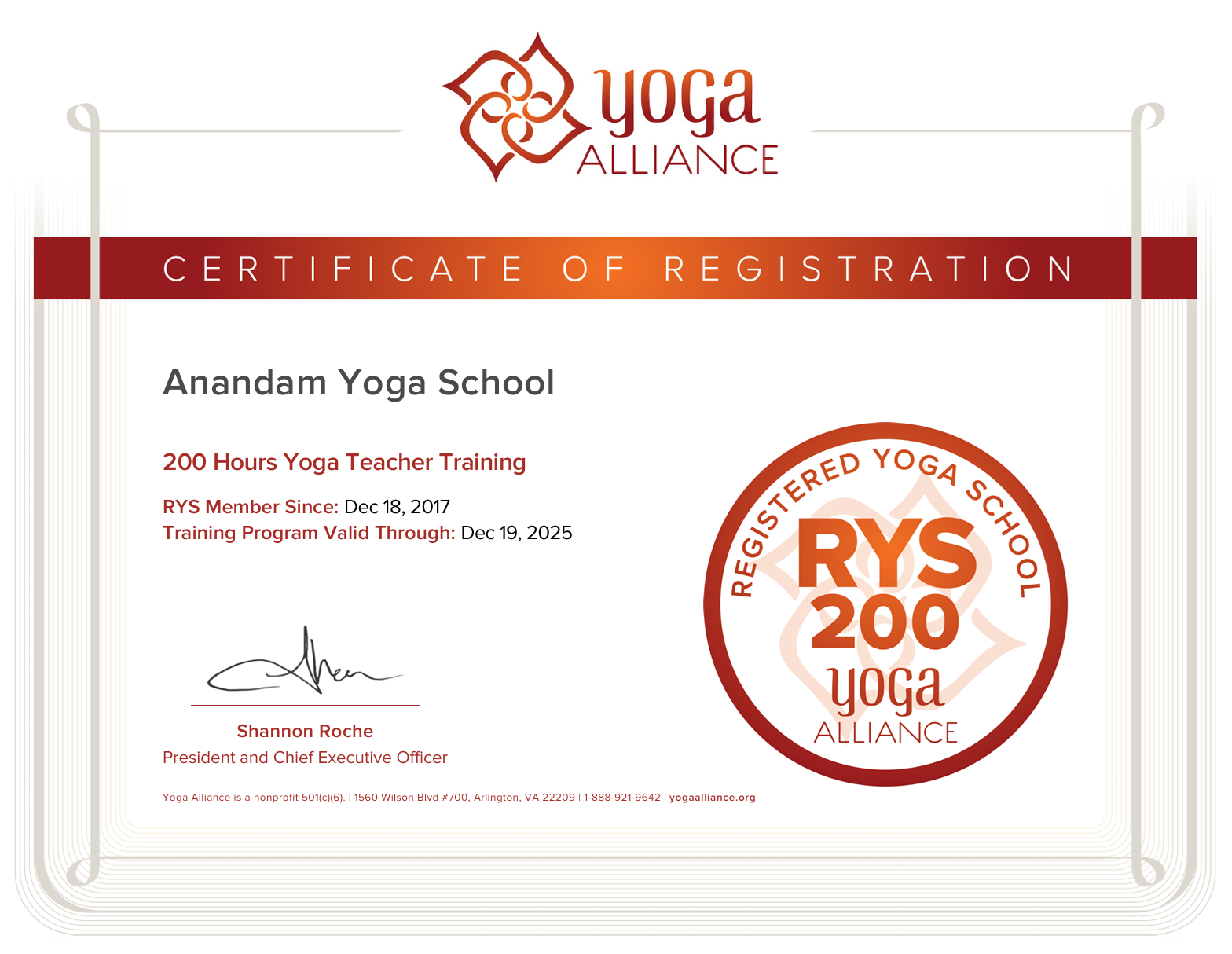


Posted onTrustindex verifies that the original source of the review is Google. I did my 200YTT with Anandam Yoga School in August in Bali and it was an exceptional experience. Navin and Ming guided us through the course and shared their valuable yoga experience and knowledge with us. Katharina’s anatomy classes perfectly linked the facts to the yoga practice. She also provided a detailed and very well- structured course manual which I still keep consulting. I enjoyed the course very much, could improve my own practice, deepen my knowledge and prepare myself for a step forward to become a yoga teacher. I am thinking of doing some other training courses with Anadam Yoga School in the future. Thank you, Anandam Yoga School team:-)Posted onTrustindex verifies that the original source of the review is Google. I completed my 200h YTT in 2025, and it was truly a transformative experience. While the classes sometimes felt overwhelming, everything gradually fell into place, and the journey continues well beyond the training itself. A heartfelt thank you to the teachers who made this possible: ✨ Navin, for teaching from his heart, his ability to break down asanas and provide encouragement when it got tough. ✨ Katharina and Bhavna, for making anatomy classes engaging and accessible. The training was more than getting stronger physically - it was wholesome and encouraged self-discovery and inner growth.Posted onTrustindex verifies that the original source of the review is Google. I had an incredibly beautiful week at Heimbach in Germany while taking part in the Yoga Nidra Teacher Training. Sandeep and Katharina are very good and really nice teachers with a lot of knowledge of and experience with authentic yoga. I am happy that they shared this with me and I feel that this made me grow in my yoga path. This, added to the positive atmosphere they created during the training, made this week an unforgettable experience!Posted onTrustindex verifies that the original source of the review is Google. I had a wonderful week of yoga Nidra teacher training at Heimbach in Germany. Beautiful location located in the green hills of the Eifel. Learning from Sandeep and Katharina was very precious, they have so much knowledge about and experience with what true yoga is. And they create such a nice athmosphere with their beautiful personalities as well! I had an amazing week!Posted onTrustindex verifies that the original source of the review is Google. J’ai suivi en avril 2025 la formation de 200 heures avec Navin, Ming et Katerina et j’en ai eu une expérience très positive. Les cours de yoga de Navin et Ming m’ont aidé à progresser dans les postures. Merci à Katherina pour ses cours d’anatomie compréhensibles pour des élèves dont l’anglais n’est pas la langue maternelle. Je ne peux que recommander cette formation pour toute personne qui souhaite approfondir ses connaissances sur le yoga dans le but ou pas de l’enseigner.Posted onTrustindex verifies that the original source of the review is Google. I had the most wonderful experience with Anandam Yoga School! I enrolled myself for the 200hours yoga teacher training course in April 2025 and it was the most transformative experience I had so far. Navin and Ming gave us alot of guidance in asanas practices and the long history of yoga. Also Katharina provided us with an in-depth knowledge about human anatomy. I will definitely enrol myself with Anandam yoga school in the future to enrich myself!Posted onTrustindex verifies that the original source of the review is Google. J’ai réalisé le 200h YTT avec Anandam à Bali. L’expérience était extraordinaire et très enrichissante. Les profs sont supers. Au-delà de la formation, j’ai beaucoup appris sur moi même, pris confiance en moi et en mes capacités. Je pense faire le 300h YTT également avec cet organisme !Posted onTrustindex verifies that the original source of the review is Google. I had a beautiful experience at Anandam Yoga School. Naveen, Katharina and Sandeep were wonderful teachers. They are so kind and always allow for an atmosphere to feel safe in your vulnerability. The YTT is always an experience where people are learning and growing physically, mentally, emotionally and spiritually. My yoga teachers always allowed for this growth whilst supporting us when we made mistakes or found poses hard, for example. The YTT here was a truly precious experience for me and one I will hold in my heart. I loved the authenticity and the way we could connect to the yoga philosophy and spirituality of yoga - which is what makes yoga yoga. There was an emphasis on teaching traditional yoga which is incredibly important and I appreciated this a lot. Thank you for my wonderful teachers for their kindness and calmness throughout my journey. The YTT created an opportunity for self-discovery that I truly valued. I enjoyed socially learning about yoga with a lovely group of people. I found depth in my connection with the spirituality of yoga in my solitude and had a real opportunity for self-reflection and empowerment with the YTT. I would definitely recommend it to anyone considering YTT. I am still in touch with Naveen, Katharina and Sandeep and am sure our paths will cross via yoga or friendship again at some point in our lives. Lots of love to you, Bhawna 🤍Posted onTrustindex verifies that the original source of the review is Google. I recently completed the 200-hour Yoga Teacher Training with Anandam, and it was one of the most beautiful gifts I’ve ever received in my life. My intention going into the course was to expand my understanding of the yogic philosophy, anatomy, and deepen my personal asanas practice— I walked away with everything I hoped for, and more than I could have imagined. The environment Sandeep and Katharina created allowed us to really dive deep —physically, mentally, and spiritually. If I had to sum up the experience in one word, it would be authentic. Every aspect of the training, from the teachings to the community, was rooted in true yogic history & values. The teachings themselves were structured, disciplined and methodical, yet delivered in a way that felt accessible and not intimidating. I’m the kind of person who loves to ask a million questions, and all of the teachers so happy to engage (even when I thought i might be being annoying!) Amidst all the learning, there was also so so much playfulness, fun, and laughter. It made the experience feel lighthearted, joyful, and full of connection. Beyond the course completion, the supporting materials we received have been invaluable -they're tools I continue to reference almost daily. Meeting and learning from Sandeep and Katharina, (& Nadeem & Ming) was transformative, and I’m beyond grateful to have had the opportunity to learn and grow in such a supportive environment from such beautiful, knowledgeable & grounded people. <3Posted onTrustindex verifies that the original source of the review is Google. Dear Katharina, dear Sandeep, dear Navin, dear Ming - you wonderful teachers! A heartfelt thank you for all the new knowledge, your experiences you shared with us and the loving space you have created to meet all these wonderful people in our small group of the 200hour teacher training! I loved the atmosphere, I loved the place, I loved the togetherness and of course I loved the pool to cool down 😅 in hot Bali!
We genuinely value direct bookings with us as they help us provide you with the best possible experience. Please note that we have changed our course venue for 2025. The pictures below show the new venue and accommodation options.
Early Bird are special prices for the first 6 registrations per month. Register now to benefit from this special offer.

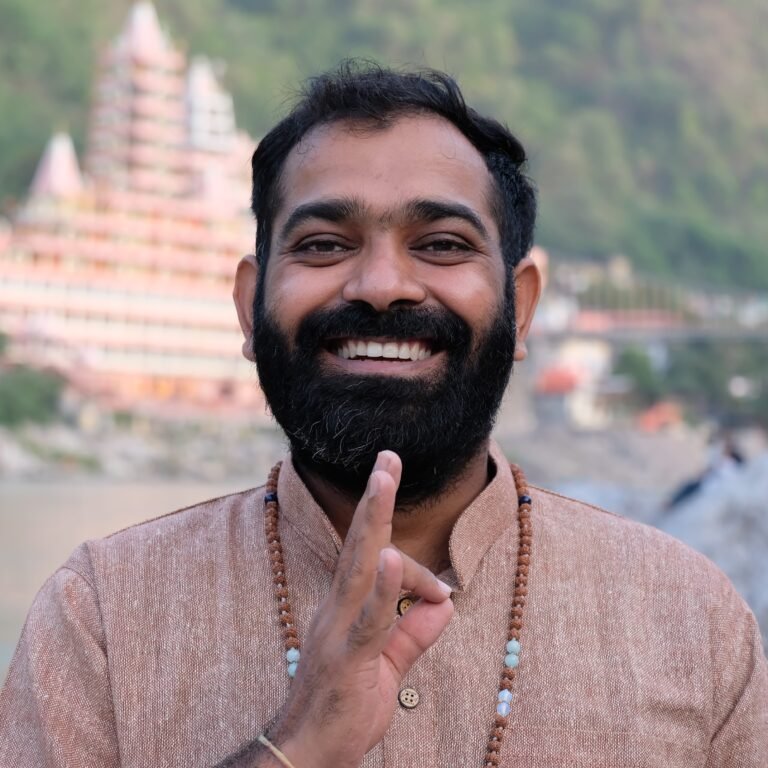
Lead Teacher
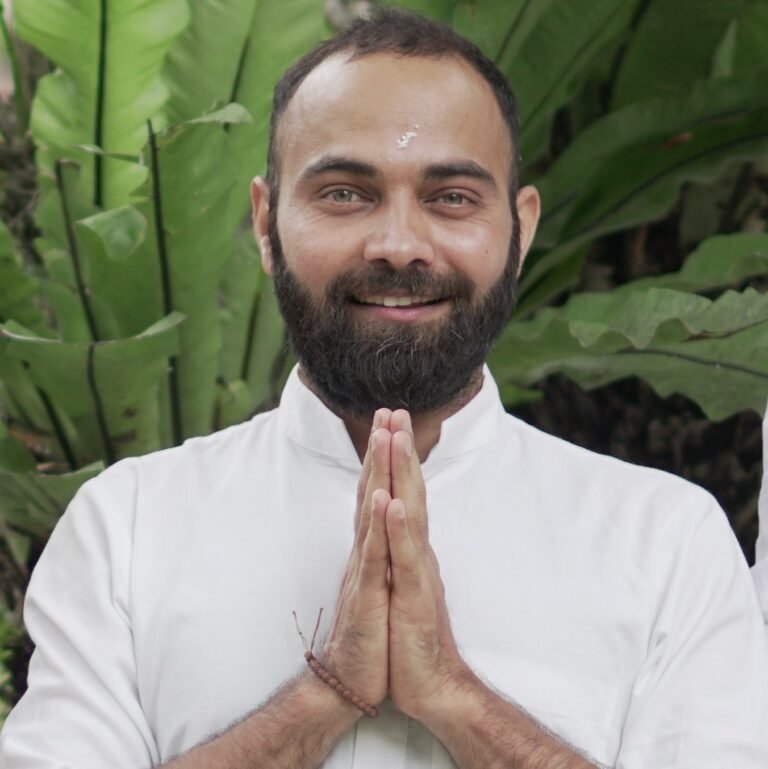
Lead Teacher
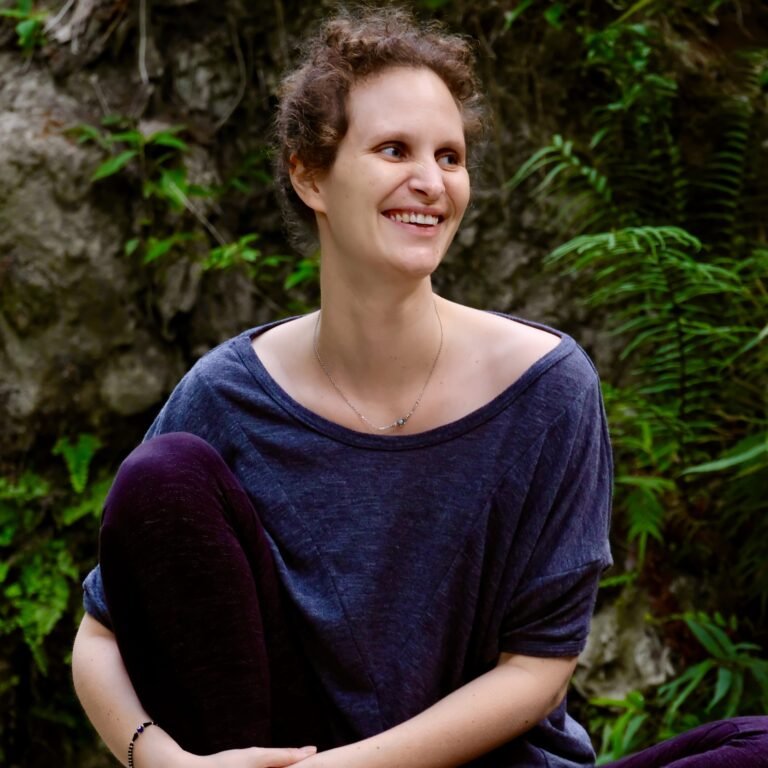
Lead Teacher

Yoga Teacher

Being a Yoga teacher is more than showing poses. It’s about guiding others with compassion on their journey to a better life.

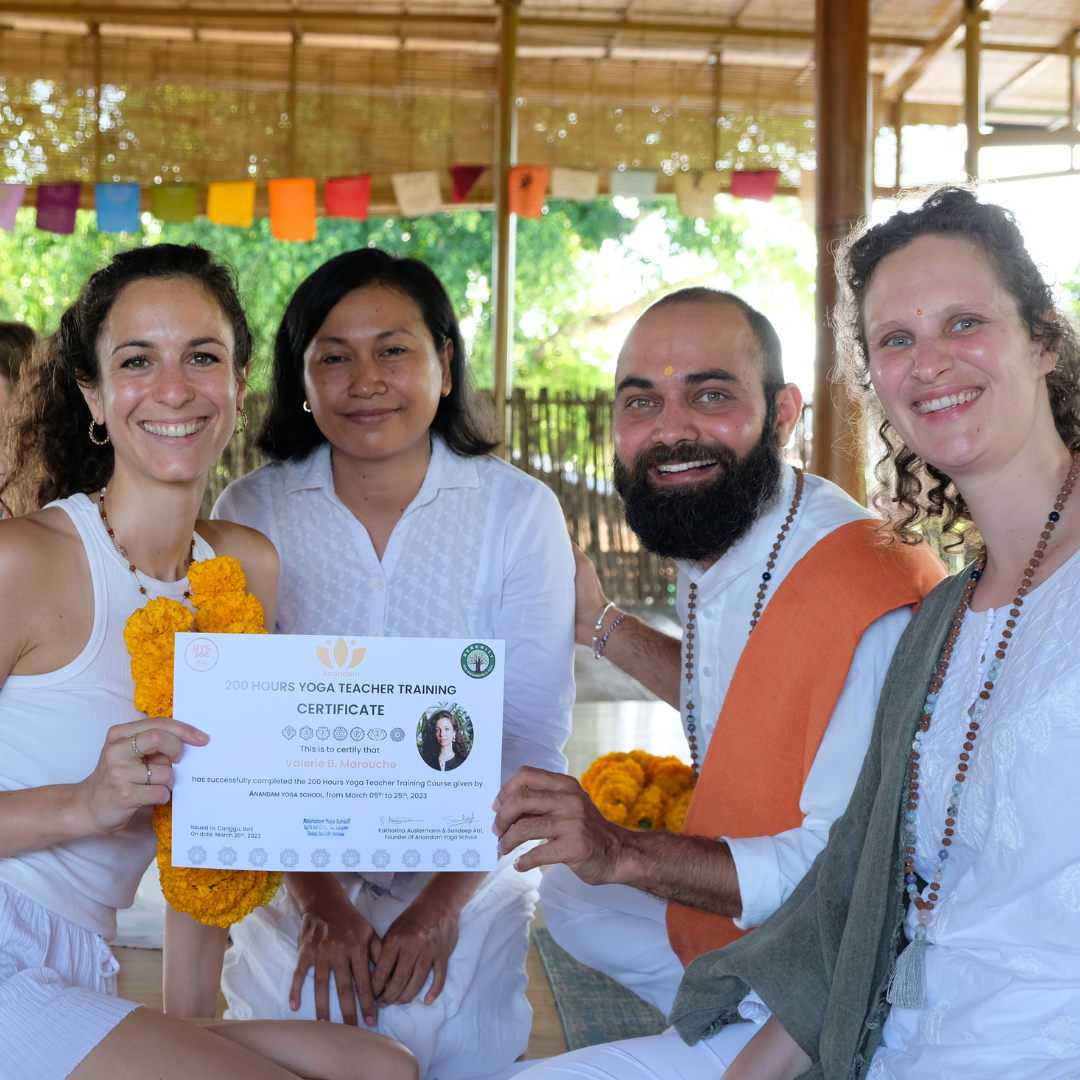





No, a 200 hour Yoga certificate is not needed to join our Arm Balancing Yoga teacher training. You can use the course to deepen your own practice and learn more about arm balances in Yoga.
Our average class size is 5 to 10 students. We believe in individualized support thus the smaller group size. It allows us to support every student on their personal Yoga journey.
Lorem ipsum dolor sit amet, consectetur adipisicing elit. Optio, neque qui velit. Magni dolorum quidem ipsam eligendi, totam, facilis laudantium cum accusamus ullam voluptatibus commodi numquam, error, est. Ea, consequatur.
The youngest student we had was 18 and the oldest student we had so far was 57. So, we have quite a wide age range, which beautifully allows Yoginis and Yogis of different ages to learn from each other.
Yes, definitely! It is a beautiful way to deepen your own practice and learn more about Arm Balances.
We offer different course packages. You can choose to stay with us or find you own accommodation. The basic course fee (without accommodation) includes all study materials, Yoga Alliance certification after successful completion and daily breakfast. You can choose from different course and accommodation packages if you choose to stay with us.
In this Arm Balancing training you will
Please bring comfortable, ideally light cotton clothes for the practice; white clothes for the opening and closing ceremonies; natural mosquito repellent; beach towels; your everyday toiletries; light and airy clothing; sunscreen and all you think you need for a wonderful time in the tropical Bali.
Yes, sure! We don’t have any dietary restrictions during our Yoga teacher training. However, we recommend to adhere to a vegetarian diet during the Yoga teacher training Bali, to feel the effects on body and mind.
Practice Yoga regularly, drink enough water, try to cultivate a positive and open mindset, try to get enough rest and take time for relaxation, try to include arm, shoulder and core strengthening exercises into your routine.
To reserve your spot in the course we kindly ask you to deposit $500. This deposit is non-refundable. In case you have to cancel the training for any reason, the deposit can be applied to a later training.
Yes, this 50 hour Arm Balancing Yoga teacher training is registered with Yoga Alliance and part of the YACEP (Yoga Alliance continuous education program) and you will receive a Yoga Alliance affiliated certificate after successful completion. If you are already a Yoga teacher you can add the 50 hours to your continuous education hours.

Being a Yoga teacher is more than showing poses. It’s about guiding others with compassion on their journey to a better life.

Being a Yoga teacher is more than showing poses. It’s about guiding others with compassion on their journey to a better life.